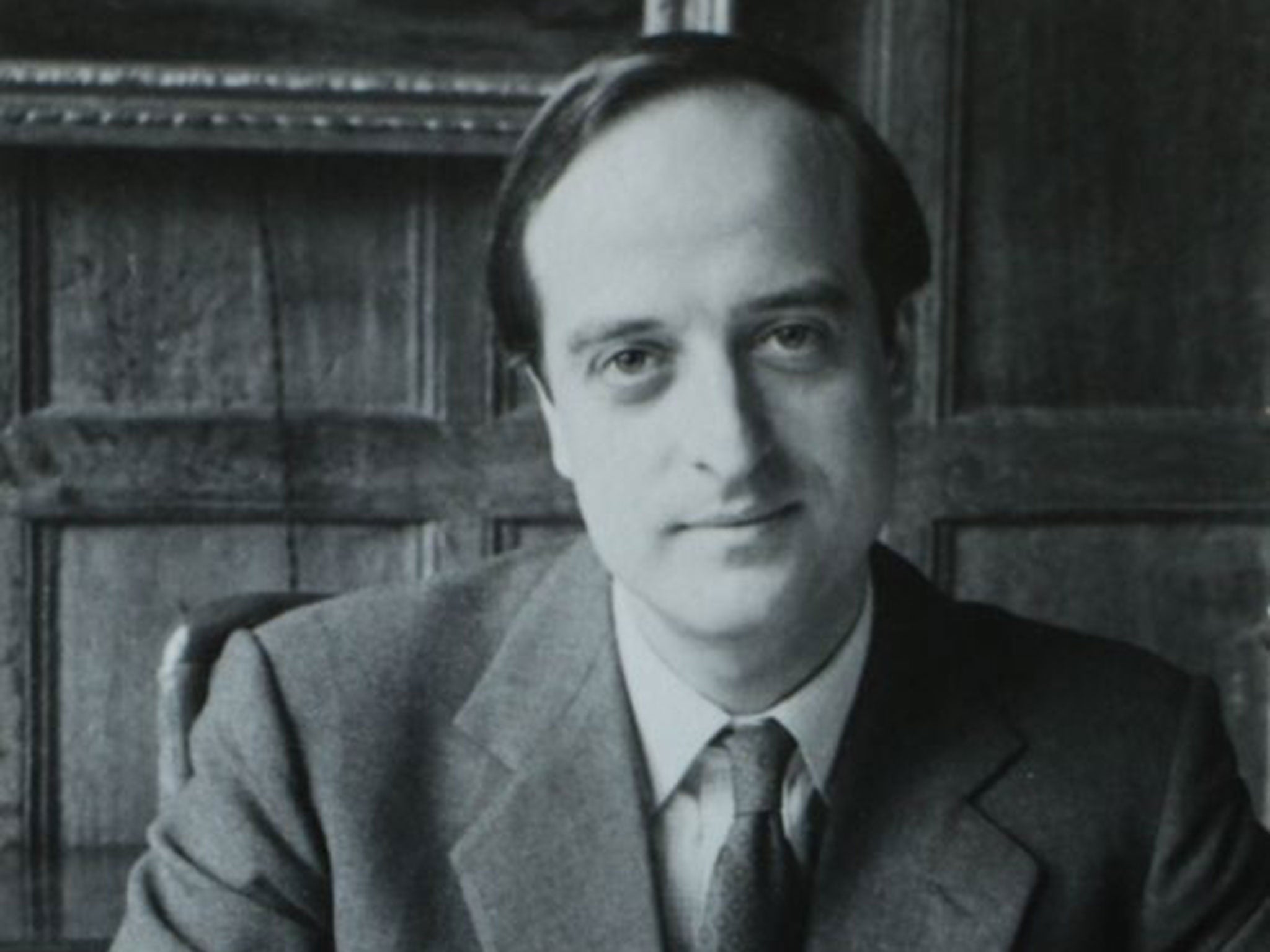Edmund Brudenell: Landowner who with his wife restored Deene Park
Deene Park had been in lived in by his family since 1514

Your support helps us to tell the story
From reproductive rights to climate change to Big Tech, The Independent is on the ground when the story is developing. Whether it's investigating the financials of Elon Musk's pro-Trump PAC or producing our latest documentary, 'The A Word', which shines a light on the American women fighting for reproductive rights, we know how important it is to parse out the facts from the messaging.
At such a critical moment in US history, we need reporters on the ground. Your donation allows us to keep sending journalists to speak to both sides of the story.
The Independent is trusted by Americans across the entire political spectrum. And unlike many other quality news outlets, we choose not to lock Americans out of our reporting and analysis with paywalls. We believe quality journalism should be available to everyone, paid for by those who can afford it.
Your support makes all the difference.Few men in England can have lived in a great house which was built and occupied by their family for 500 years. The centre of Edmund Brudenell’s life was Deene Park, the beautiful and interesting Northamptonshire home, lived in by the Brudenell family since 1514 and developed from a medieval manor around a courtyard into a Tudor and Georgian mansion.
With a gentle chuckle, Brudenell would welcome his many Scottish guests by referring to the probability that the first Brudenell had returned from winning glory at Flodden in 1513 and decided to settle in Northamptonshire as a victorious squire. He and his wife of 59 years, the formidable, charming and can-do Marian Manningham-Buller (Independent obituary, 27 August 2013), lovingly restored Deene Park to its former glory after it had been occupied by several different regiments during the Second World War.
Brudenell’s sister-in-law Eliza, now Baroness, Manningham-Buller, told me, “When we saw what my older sister Marian was expected to take on at Deene, our family wondered.” But Edmund and Marian more than coped. They made it possible for the public to see many rooms of different periods, providing an impressive yet intimate ambience of the family home of many generations.
Edmund would give a fierce and detailed defence of the most flamboyant member of the family, the 7th Earl of Cardigan, who led the Charge of the Light Brigade during the Crimean War, while proudly pointing to the many historic relics and pictures on view. When I said, “But Edmund, the historians of my National Service regiment, the Royal Scots Greys, and the 17th/21st Lancers [the “Death or Glory” Skull and Crossbones boys, who celebrate Balaclava Day] have it that your ancestor was feckless and foolhardy,” he rebuked me. “Your hindsight is marvellous,” he said. “But what you think is obvious now was not obvious to Cardigan then.”
Brudenell had a wonderful capacity to laugh at himself. On his travels he would carry around a small leather case, embossed with a coronet and a capital “C”, indicating association with the earls of Cardigan. It contained a teapot and a thermos: whatever the situation, come what may, he had to have his 4pm cup of tea.
He was teased by his friends on account of this. At the suggestion of Sir Timothy Clifford, then Director of the Scottish National Gallery, Brudenell decorated the top of the obelisk at Deene Park not with the planned orb but with a teapot. Sir Angus Grossart assured me that Brudenell enjoyed being called “Mr Bean” by his friends: “From an austere, withdrawn man there emerged a lively and witty spirit with an 18th-century landowner’s frame of mind.”
Brudenell was land-rich but cash-poor, but for years, every month he and Marian brought together people from many walks of life. Crucially, he had a butler, who could easily have been confused with Mr Carson of Downton Abbey. Being invited to Deene for a weekend was to experience a world of scrambled eggs, bacon, tomatoes and mushrooms on silver platters, an England long gone.
Brudenell told me that he knew he was an anachronism. But the fact remains that he and Marian, by sheer hard work, brought back a near-derelict house and a bankrupt, ill-kept estate to their former glory, with the house and Marian’s garden to be enjoyed by the public.
Brudenell’s only excursion into national politics was in 1964 as Conservative candidate for Whitehaven, where he lost to Joe Symonds. Symonds’ successor Jack Cunningham, now Lord Cunningham, told me, “He was somewhat of a legend in the constituency. The electors of industrial Cumbria in no way disliked him, but they did find him very odd – and not a suitable person to represent their problems in the House of Commons.”
Andrew Wemyss, a valued friend, and frequent guest at Deene Park weekends – and who can trace his own ancestry back to around 1200 – reminisced: “By my standards the Brudenells were nouveau riche. One of my ancestors was killed at Flodden – possibly by Brudenell. Edmund was the last of the eccentrics.” Eccentric, yes – but a hero, with Marian, of the national heritage.
Edmund Crispin Stephen James George Brudenell, landowner and businessman: born 24 October 1928; educated Harrow and Royal Agricultural College, Cirencester; High Sheriff of Leicestershire 1969, of Northamptonshire 1987; married 1955 Marian Manningham-Buller (one daughter, two sons); died Deene Park 19 October 2014.
Join our commenting forum
Join thought-provoking conversations, follow other Independent readers and see their replies
Comments